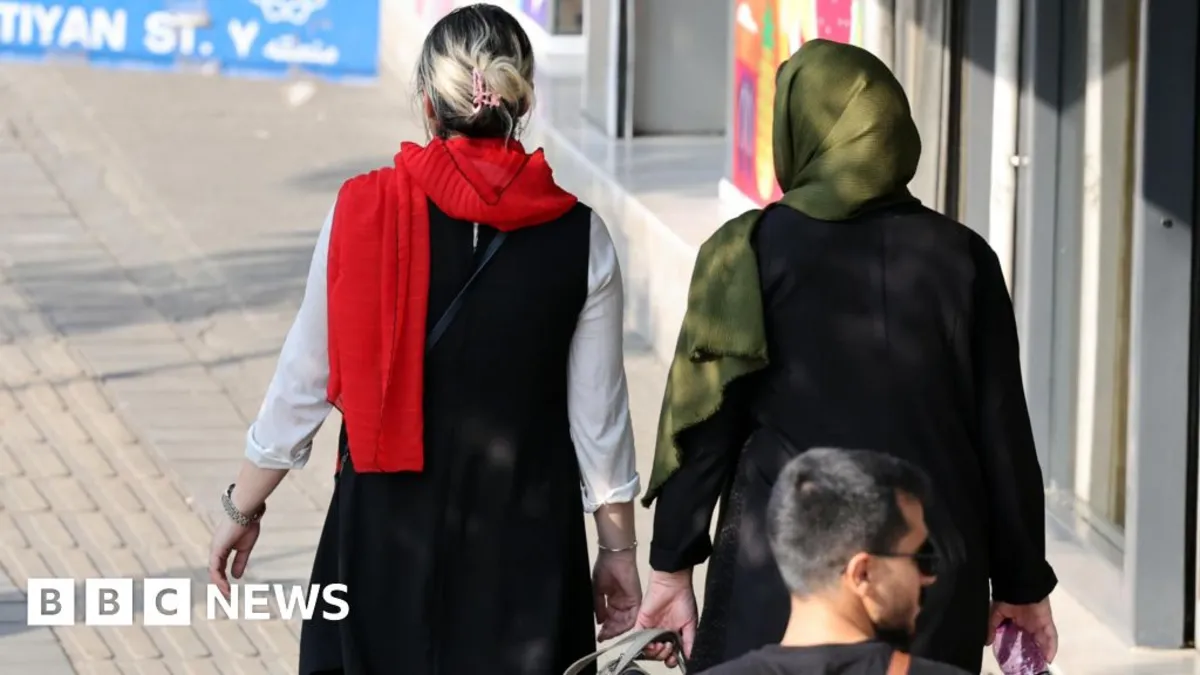
The United Nations has reported that Iran is employing advanced drones and intrusive digital technology to suppress dissent, particularly targeting women who resist the Islamic Republic's stringent dress code. Investigators reveal that Iranian security officials are implementing a strategy of state-sponsored vigilantism, encouraging citizens to utilize specialized phone apps to report women for alleged violations of the mandatory dress code.
The new findings highlight a disturbing trend where authorities are increasingly relying on technology to monitor hijab compliance in urban centers like Tehran and southern Iran. Women who defy these laws or protest against them face severe repercussions, such as arrest, physical assault, and even sexual violence while in custody. This report from the Independent International Fact-Finding Mission on the Islamic Republic of Iran comes in the wake of last year's conclusion that the Iranian theocracy was responsible for the violent death of Mahsa Amini in custody, which sparked widespread protests.
Mahsa Amini, a 22-year-old Kurd, was reported to have been brutally beaten by the morality police during her arrest for allegedly violating the hijab laws. Official narratives claim that her death was due to sudden heart failure, a statement that has been met with public skepticism and outrage. Her death ignited a significant protest movement that continues to challenge the state's oppressive measures, despite threats of violent arrests and imprisonment.
Almost two-and-a-half years after the protests began in September 2022, women and girls in Iran are still subjected to systemic discrimination, particularly concerning the enforcement of the mandatory hijab. The report indicates that the Iranian government is increasingly engaging the public in this enforcement effort, portraying compliance with hijab laws as a civic duty.
At institutions like Tehran's Amirkabir University, authorities have installed facial recognition software at entrance points to identify women not adhering to the hijab regulations. Additionally, surveillance cameras along major roads are being deployed to detect women who are uncovered.
Investigators have also examined the Nazer mobile phone app, which is promoted by Iranian police. This app allows vetted members of the public to report women who are not wearing the hijab while in various types of vehicles, including ambulances, buses, metro cars, and taxis. Users can document the location, date, time, and license plate number of the vehicle where the alleged infraction occurred, thereby flagging it online and alerting law enforcement.
A subsequent text message is sent to the registered owner of the vehicle, notifying them of their violation of hijab laws. Failure to comply with these warnings can lead to vehicle impoundment, according to the report's findings.
The UN investigators conducted interviews with nearly 300 victims and witnesses, delving deeply into Iran's judicial system, which they found to lack genuine independence. Victims of torture and other human rights violations face ongoing persecution, while their families experience systematic intimidation.
The report also uncovers evidence of extrajudicial executions, including the deaths of three child protesters and three adult protesters, which the state dismissed as suicides. Furthermore, it documents multiple instances of sexual violence in custody, including one harrowing case where a woman was severely beaten, subjected to two mock executions, raped, and gang-raped.
This critical report is set to be presented to the Human Rights Council on March 18, serving as a stark reminder of the ongoing human rights abuses in Iran and the urgent need for international attention and action.